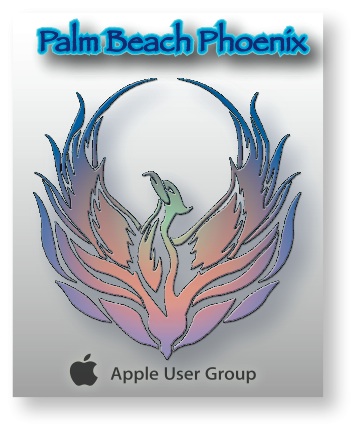Mac Corner: The Sorry State of Customer Service
By Larry Grinnell, Palm Beach Phoenix Apple Users Group

Last year, I did a piece on the sad state of affairs with local servicing of computer and electronics gear. This time, I’d like to talk a little about the even sorrier state of customer support by the major manufacturers of consumer electronics equipment.
First, let’s look at user manuals. Remember when you used to get a big, meaty manual with your new software, or your new computer, or your new cellphone? Well, if you’ve seen what’s packed in the box with your new widget these days, you know what I mean. Where there once was a large manual, written well or written badly is immaterial, now you get a heavily content-reduced version — often only covering the items that get the most calls on their customer support lines.
Problem is, your device probably does more than what is documented in the manual — a lot more, in fact. Unless the device has some kind of in-device help system, or the manufacturer has a website that maybe … maybe posts more detailed instructions, you may never be able to figure out how to make use of that fancy new feature that was in the marketing literature.
It’s like this. A large manual costs lots of money — not just the print costs, which are substantial, but so is the cost of maintaining a large technical publications staff trained to learn everything there is to know about that product so they can tell others, the customers, how to use all the features that they paid for.
So, by reducing content, they can cut down the number of pages that get printed, which also permits them to cut staff because they don’t need to take as much time documenting the features that management has decided aren’t important enough to share with the customer.
The numbers can be staggering — literally millions of dollars can be saved by reducing content, or going to the next step, doing a “quick start guide,” that provides the most rudimentary basics (little more than marketing fluff): how to insert the battery, how to power it up, and how to perform several primary tasks. Because many of these products are very complicated, a thorough user manual is vital. Unfortunately, many users are technophobes, or simply not very technically oriented, resulting in a lot of frustration at not being able to comprehend the user guides (remember the infamous VCR user guides back in the ‘80s and ‘90s?).
I can remember trying to explain to my mother, over the phone (long distance), how to record a show on her VCR, almost nightly. I eventually used my skills as a technical writer to create a series of laminated sheets of paper — each one detailed a single task from start to finish, such as, how to set the timer to record a show, or how to watch one show while recording another, and so on. These were step-by-step at the most elemental level, as basic as telling how to turn the VCR and TV on. She used them for a number of years, until she lost her sight and couldn’t watch TV anymore.
Technical publications organizations are cost centers. In other words, they do not generate revenue for the company — instead, they cost the company money to operate, so many are cutting these staffs to the bone, or are outsourcing these departments as well as the printing to Asia and elsewhere (you think you can’t understand your manual now?). If you think the cost savings are insignificant, think again. If you have a product with annual sales of 10 million, and you can eliminate 15 cents from the cost of printing the manual for that product, you have just saved your company $1.5 million.
This, my friends, is why the quality of instructional user material has gone into the toilet in recent years. Further, studies have shown that many customers simply don’t read the manuals, so management again feels justified in putting out lousy documentation. It’s just easier to get on the phone and call the call center.
Call centers are another major cost center to companies. You need a lot of folks, scripted procedures in hand, to be ready to talk to the customers. They also need a group of fairly well paid content developers to prepare material for their call center operators — material that used to be created by the technical publications department. All of these people, content developers, etc., are why companies began looking to offshore solutions, and began outsourcing their call centers to India, China, the Philippines, and parts of Central and South America, because they can pay operators a couple of dollars an hour, compared to probably somewhere around $10-12 bucks an hour here.
The offshore call center operators use the same scripts developed by the content development teams in the US, and take callers through a step-by-step procedure based upon the customer problem.
Frankly, because these are cost centers, companies really could care less that their customers can’t understand the operators, or get wrong or misleading information, and will not care until it can be proven in simple dollars and cents, revenue that is lost from the lack of repeat sales and disgruntled customers convincing their friends not to buy products from that manufacturer due to their bad experience.
Solutions? Sadly there are few, if any. Companies are told by their stockholders to cut costs at all cost. Internal cost centers are easy targets, and until, as I said above, companies can really prove the worth of adequate user documentation and telephone support, it’s not going to get any better. Most likely, it will get even worse over time. When it gets really bad, some smart company is going to discover this and restore some of these customer-facing services and use them as a competitive advantage. Sometimes you just have to spend some money to make money.
EDITOR'S NOTE: Readers are welcome to comment on this or any Mac Corner columns by visiting the Palm Beach Phoenix blog as well as by writing the editor of Palm Beach Business.com.
Mac Corner runs every Wednesday only in Palm Beach Business.com. Click to read the previous column.
About Larry Grinnell: Larry has been working with Macintosh and Windows PCs for over 25 years and worked as a senior technical writer and IT support professional for a major midwest-based consumer electronics and telecommunications equipment manufacturer here in South Florida. His musings on a wide variety of topics from computers to jazz guitar to strange foreign cars from the 1950s can be viewed at the MyMac.com website. Click here to reach him by email.
 Writers of this column are members of the Palm Beach Phoenix Apple User Group, a nonprofit organization for Apple Computing Device Users, recognized by Apple Inc., with the purpose of providing educational training and coaching to its members (students, professionals and seniors alike) in a cordial social environment. The club meets the second Saturday (1-4 p.m.) and fourth Wednesday (6-8 p.m.) of each month at the Fire Station #2, 4301 Dixie Highway in West Palm Beach (just two block south of Southern Boulevard). Click here to visit their website. Click here to reach them by email.
Writers of this column are members of the Palm Beach Phoenix Apple User Group, a nonprofit organization for Apple Computing Device Users, recognized by Apple Inc., with the purpose of providing educational training and coaching to its members (students, professionals and seniors alike) in a cordial social environment. The club meets the second Saturday (1-4 p.m.) and fourth Wednesday (6-8 p.m.) of each month at the Fire Station #2, 4301 Dixie Highway in West Palm Beach (just two block south of Southern Boulevard). Click here to visit their website. Click here to reach them by email.






